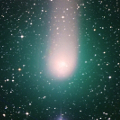
|
Now it is bright as 8.5 mag (Aug. 20, Carlos Labordena). It is observable at 7.5-8 mag for a long time from 2022 to 2023. In the Northern Hemisphere, it will be unobservable in mid September. Then it is not observable at the high light until 2023 summer. In the Southern Hemisphere, it stays observable for a long time.
Date(TT) R.A. (2000) Decl. Delta r Elong. m1 Best Time(A, h)
Aug. 20 16 5.09 -18 23.9 2.020 2.355 96 8.3 20:13 ( 34, 29)
Aug. 27 16 0.17 -21 0.6 2.089 2.302 88 8.3 20:02 ( 37, 24)
|
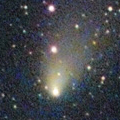
|
It brightened up to 10.4 mag from June to July (July 22, Ken-ichi Kadota). Now it is not observable. In the Souther Hemisphere, it will appear in the morning sky at 12 mag in October. It will never be observable again in the Northern Hemisphere.
Date(TT) R.A. (2000) Decl. Delta r Elong. m1 Best Time(A, h)
Aug. 20 10 46.09 -2 18.1 2.035 1.132 19 10.0 20:13 (100,-18)
Aug. 27 11 1.30 -7 45.1 2.063 1.172 20 10.2 20:02 ( 95,-22)
|
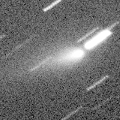
|
Now it is 12.2 mag (Aug. 20, Chris Wyatt). It brightens up to 11-12 mag from summer to autumn. It stays observable in good condition in the Southern Hemisphere. In the Northern Hemisphere, it becomes extremely low from August to September. Michael Jager detected several fragments at 17.5-19 mag.
Date(TT) R.A. (2000) Decl. Delta r Elong. m1 Best Time(A, h)
Aug. 20 13 19.34 -10 35.9 1.076 0.977 55 11.5 20:13 ( 70, 8)
Aug. 27 13 46.17 -14 59.5 1.039 0.973 56 11.4 20:02 ( 65, 7)
|
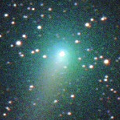
|
It brightened up to 9.3 mag in early summer (June 5, Chris Wyatt). Now it is fading. It has already faded down to 12.8 mag (Aug. 20, Chris Wyatt). In the Southen Hemisphere, it stays observable in good condition for a long time, although it becomes temporarily low in August. In the Northern Hemisphere, it is not observable until November when it fades down to 13 mag.
Date(TT) R.A. (2000) Decl. Delta r Elong. m1 Best Time(A, h)
Aug. 20 9 53.27 -40 53.7 2.412 1.985 53 11.4 3:52 (296,-45)
Aug. 27 9 58.03 -40 5.9 2.509 2.025 50 11.6 3:59 (296,-39)
|

|
It brightened up to 8.3 mag in winter (Jan. 6, Toshiyuki Takahashi). Now it is fading. Now it is not observable. It will appear in the morning sky again in September in the Southern Hemisphere, or in October in the Northern Hemisphere.
Date(TT) R.A. (2000) Decl. Delta r Elong. m1 Best Time(A, h)
Aug. 20 8 55.18 -3 13.2 5.003 4.081 21 11.7 3:52 (262,-16)
Aug. 27 9 1.90 -4 30.3 5.008 4.112 24 11.7 3:59 (268,-11)
|
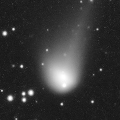
|
Now it is bright as 12.5 mag (Aug. 18, Ken-ichi Kadota). It stays 12 mag for a while. It becomes unobservable from August to November in the Northern Hemisphere, or from September to December in the Southern Hemisphere.
Date(TT) R.A. (2000) Decl. Delta r Elong. m1 Best Time(A, h)
Aug. 20 12 46.28 -3 1.1 4.937 4.284 45 12.3 20:13 ( 82, 6)
Aug. 27 12 53.25 -2 57.9 5.017 4.293 40 12.4 20:02 ( 83, 4)
|
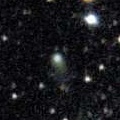
|
Now it is bright as 12.3 mag (Aug. 21, Osamu Miyazaki). It will approach to Earth down to 0.29 a.u. in 2023 February, and it is expected to brighten up to 5 mag. In the Northern Hemisphere, it stays observable in excellent condition. In the Southern Hemisphere, it becomes unobservable from late September to early February.
Date(TT) R.A. (2000) Decl. Delta r Elong. m1 Best Time(A, h)
Aug. 20 16 47.62 34 27.8 2.144 2.423 93 12.5 20:13 ( 94, 73)
Aug. 27 16 34.17 33 28.2 2.167 2.343 87 12.4 20:02 ( 94, 67)
|

|
The condition is worst in this apparition. It is not observable at all.
Date(TT) R.A. (2000) Decl. Delta r Elong. m1 Best Time(A, h)
Aug. 20 10 55.59 9 52.1 2.047 1.101 14 12.9 20:13 (108, -9)
Aug. 27 11 22.66 7 35.3 2.017 1.077 15 12.6 20:02 (105, -8)
|
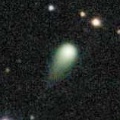
|
Now it is 12.6 mag (Aug. 18, Ken-ichi Kadota). It is expected to brighten up to 10 mag in 2023. In the Northern Hemisphere, it stays observable in good condition until 2023 autumn, although it becomes very low temporarily in summer. In the Southern Hemipshere, it stays unobservable until 2023 summer.
Date(TT) R.A. (2000) Decl. Delta r Elong. m1 Best Time(A, h)
Aug. 20 10 15.16 52 40.2 4.338 3.625 40 12.8 20:13 (147, 13)
Aug. 27 10 19.85 52 37.6 4.250 3.569 42 12.7 3:59 (212, 12)
|

|
Now it is 14.0 mag (Aug. 20, Chris Wyatt). It will brighten up to 12.5 mag in summer. In the Southern Hemisphere, it stays observable in excellent condition for a long time. In the Northern Hemisphere, it locates extremely low for a while.
Date(TT) R.A. (2000) Decl. Delta r Elong. m1 Best Time(A, h)
Aug. 20 16 53.42 -44 5.4 2.479 2.968 109 12.7 20:13 ( 13, 9)
Aug. 27 16 47.42 -40 56.5 2.589 2.963 101 12.8 20:02 ( 18, 11)
|
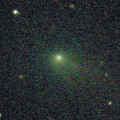
|
Now it is 13.6 mag (Aug. 10, Osamu Miyazaki). It stays observable in good condition after this. But it will be fading gradually after this.
Date(TT) R.A. (2000) Decl. Delta r Elong. m1 Best Time(A, h)
Aug. 20 1 41.59 3 55.3 1.440 2.150 121 13.1 3:50 ( 0, 59)
Aug. 27 1 41.21 3 29.4 1.416 2.191 128 13.2 3:22 ( 0, 59)
|

|
Now it is not observable. It will appear in the morning sky in September in the Northern Hemisphere, or in November in the Southern Hemisphere. It will brighten up to 11.5 mag in winter
Date(TT) R.A. (2000) Decl. Delta r Elong. m1 Best Time(A, h)
Aug. 20 8 34.33 17 56.5 2.876 1.958 20 13.4 3:52 (248, 0)
Aug. 27 8 51.77 16 55.8 2.814 1.922 22 13.3 3:59 (252, 3)
|

|
Now it is 13.3 mag (Aug. 3, Michael Jager). It is expected to brighten up to 11 mag in 2023. In the Northern Hemisphere, it stays observable in good condition until November. But it becomes unobservable after that. In the Southern Hemisphere, it stays observable in good condition for a long time, although it becomes unobservable temporarily from November to January.
Date(TT) R.A. (2000) Decl. Delta r Elong. m1 Best Time(A, h)
Aug. 20 17 22.04 2 51.1 3.500 3.968 110 13.3 20:13 ( 21, 56)
Aug. 27 17 18.90 0 56.1 3.559 3.927 103 13.3 20:02 ( 28, 53)
|

|
Now it is 13.8 mag (Aug. 16, Thomas Lehmann). It stays observable at 13-14 mag for a while.
Date(TT) R.A. (2000) Decl. Delta r Elong. m1 Best Time(A, h)
Aug. 20 18 24.82 -32 20.4 2.317 3.047 128 13.5 20:31 ( 0, 23)
Aug. 27 18 25.57 -32 12.7 2.396 3.050 121 13.6 20:04 ( 0, 23)
|
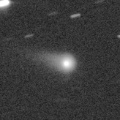
|
Now it is 13.5 mag (Aug. 18, Hiroshi Abe). It is expected to brighten up to 12 mag in 2023. In the Northern Hemisphere, it stays observable in good condition for a long time, although it becomes unobservable temporarily in October. In the Southern Hemisphere, it locates extremely low in 2022, but it will be observable in good condition in 2023.
Date(TT) R.A. (2000) Decl. Delta r Elong. m1 Best Time(A, h)
Aug. 20 13 24.78 24 37.1 4.697 4.131 50 13.6 20:13 (101, 29)
Aug. 27 13 25.01 23 5.3 4.745 4.102 45 13.6 20:02 (101, 25)
|

|
Now it is 14.9 mag (Aug. 18. ATLAS-HKO, Haleakala).
Date(TT) R.A. (2000) Decl. Delta r Elong. m1 Best Time(A, h)
Aug. 20 6 31.66 29 3.9 6.616 6.016 49 13.9 3:52 (254, 30)
Aug. 27 6 36.41 29 1.9 6.530 6.018 55 13.9 3:59 (257, 36)
|
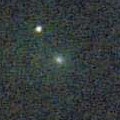
|
Bright new comet. Now it is very bright as 13.3 mag (Aug. 25, Katsumi Yoshimoto). It stays 12-13 mag until November. In the Southern Hemisphere, it stays observable in good condition for a while. In the Northern Hemisphere, it becomes low rapidly.
Date(TT) R.A. (2000) Decl. Delta r Elong. m1 Best Time(A, h)
Aug. 20 2 48.60 8 41.5 1.547 2.045 104 14.6 3:52 (326, 60)
Aug. 27 2 36.96 4 55.6 1.348 1.993 114 14.1 3:59 (351, 60)
|
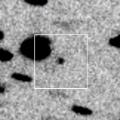
|
Now it is 14.2 mag (Aug. 17, Thomas Lehmann). Now it is fading. It stays 13-14 mag for a while. It is observable in excellent condition in the Southern Hemisphere. It locates somewhat low in the Northern Hemisphere.
Date(TT) R.A. (2000) Decl. Delta r Elong. m1 Best Time(A, h)
Aug. 20 22 51.81 -27 52.8 1.203 2.181 159 14.3 1:01 ( 0, 27)
Aug. 27 22 44.44 -28 24.9 1.241 2.221 161 14.5 0:26 ( 0, 27)
|
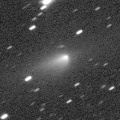
|
Now it is 13.8 mag (Aug. 20, Chris Wyatt). It becomes too low to observe in mid August in the Northern Hemisphere, or in late September in the Southern Hemisphere.
Date(TT) R.A. (2000) Decl. Delta r Elong. m1 Best Time(A, h)
Aug. 20 12 30.82 -3 36.5 2.858 2.210 41 14.4 20:13 ( 83, 3)
Aug. 27 12 44.09 -5 8.5 2.912 2.216 38 14.5 20:02 ( 83, 1)
|
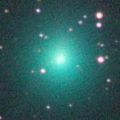
|
It brightened up to 9.3 mag from spring to early summer (Mar. 24, Michael Jager). It stayed bright for a while even after the perihelion passaage. But it is fading rapidly now. It has already faded down to 17.1 mag (Aug. 9, iTelescope Observatory, Siding Spring). In the Southern Hemisphere, it stays observable in good condition for a long time. In the Northern Hemisphere, it will never be observable again.
Date(TT) R.A. (2000) Decl. Delta r Elong. m1 Best Time(A, h)
Aug. 20 5 0.50 -54 55.8 2.049 2.305 91 14.8 3:52 (334, -9)
Aug. 27 5 10.77 -59 40.2 2.118 2.389 92 15.3 3:59 (339,-11)
|

|
Now it is 16.8 mag (Aug. 16, ATLAS-MLO, Mauna Loa). It is expected to brighten very rapidly up to 11-12 mag in winter, and it will be observable in excellent condition.
Date(TT) R.A. (2000) Decl. Delta r Elong. m1 Best Time(A, h)
Aug. 20 5 24.54 13 58.1 2.191 2.000 65 15.3 3:52 (279, 36)
Aug. 27 5 40.26 13 55.3 2.109 1.978 68 14.9 3:59 (282, 40)
|
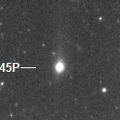
|
It brightened up to 6.7 mag in early May (May 10, Mike Olason). It became brighter than originally predicted by 3 mag. Now it is fading rapidly. The condition is very bad in this apparition. It is not observable after this.
Date(TT) R.A. (2000) Decl. Delta r Elong. m1 Best Time(A, h)
Aug. 20 11 25.00 6 58.5 2.812 1.919 22 15.0 20:13 (102, -5)
Aug. 27 11 38.83 5 29.9 2.920 1.998 19 15.4 20:02 (101, -6)
|

|
Now it is 14.5 mag (June 19, ATLAS South Africa). It was expected to brighten up to 13 mag in spring. But actually, it is fainter than originally expected. In the Southern Hemisphere, it stays observable in good condition for a long time. In the Northern Hemisphere, it is not observable until autumn.
Date(TT) R.A. (2000) Decl. Delta r Elong. m1 Best Time(A, h)
Aug. 20 6 48.27 -41 26.4 3.409 3.192 69 15.1 3:52 (312,-13)
Aug. 27 6 46.97 -42 24.2 3.373 3.206 71 15.1 3:59 (317, -9)
|
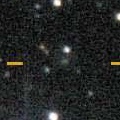
|
Now it is 16.4 mag (Aug. 7, Ken-ichi Kadota). It is expected to brighten up to 12 mag from winter to summer in 2023. In the Northern Hemisphere, it stays observable in good condition until 2023 spring. It will be observable in good condition after August also in the Southern Hemisphere.
Date(TT) R.A. (2000) Decl. Delta r Elong. m1 Best Time(A, h)
Aug. 20 4 58.85 36 48.7 3.740 3.523 69 15.3 3:52 (253, 51)
Aug. 27 5 4.00 36 14.7 3.578 3.464 75 15.2 3:59 (255, 57)
|
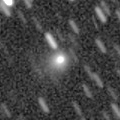
|
Now it is very bright in outburst as 14.8 mag (Aug. 20, Chris Wyatt). It was extremely faint as 20.6 mag on July 29 (Takaaki Oribe). But it suddenly brightened by 5 mag. It stays observable in good condition for a while.
Date(TT) R.A. (2000) Decl. Delta r Elong. m1 Best Time(A, h)
Aug. 20 18 23.20 11 48.9 1.534 2.241 121 15.3 20:29 ( 0, 67)
Aug. 27 18 23.40 10 11.9 1.544 2.200 117 15.4 20:02 ( 1, 65)
|

|
It has not been observed yet in this apparition. It will brighten very rapidly, and it is expected to brighten up to 15 mag in September. It is not observable in the Southern Hemisphere. It locates extremely low even in the Northern Hemisphere.
Date(TT) R.A. (2000) Decl. Delta r Elong. m1 Best Time(A, h)
Aug. 20 7 38.95 24 38.8 1.526 0.897 34 16.0 3:52 (250, 15)
Aug. 27 8 16.09 21 27.8 1.539 0.868 32 15.5 3:59 (253, 13)
|

|
Now it is 16.5 mag (Aug. 17, Thomas Lehmann). It stays at 15-16 mag for a long time. In the Southern Hemisphere, it stays observable in excellent condition for a long time. In the Northern Hemiphere, it is not observable after this.
Date(TT) R.A. (2000) Decl. Delta r Elong. m1 Best Time(A, h)
Aug. 20 14 22.66 -48 53.9 5.458 5.462 84 15.6 20:13 ( 33, -8)
Aug. 27 14 22.23 -48 50.9 5.583 5.484 79 15.6 20:02 ( 35,-10)
|
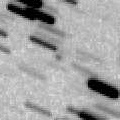
|
It is expected to brighten up to 13-14 mag in July. But actually, it is not detected, fainter than 17 mag (July 10, Martin Masek). In the Southern Hemisphere, it stays observable in good condition after this. In the Northern Hemisphere, it is not observable at all.
Date(TT) R.A. (2000) Decl. Delta r Elong. m1 Best Time(A, h)
Aug. 20 12 42.73 -35 14.6 1.872 1.660 62 15.6 20:13 ( 56,-13)
Aug. 27 13 1.27 -32 34.6 2.048 1.727 57 15.9 20:02 ( 58,-11)
|
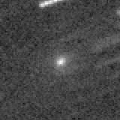
|
Now it is 14.8 mag (Aug. 18, Michael Jager). It is observable at 15 mag in good condition from July to August.
Date(TT) R.A. (2000) Decl. Delta r Elong. m1 Best Time(A, h)
Aug. 20 16 10.97 15 8.7 1.332 1.678 90 15.6 20:13 ( 61, 57)
Aug. 27 15 54.66 15 40.7 1.475 1.651 80 15.7 20:02 ( 70, 51)
|
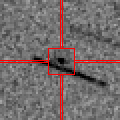
|
Now it is 16.0 mag (Aug. 3, Michael Jager). It will brighten rapidly up to 15 mag in September, and it will be observable in good condition.
Date(TT) R.A. (2000) Decl. Delta r Elong. m1 Best Time(A, h)
Aug. 20 1 24.30 13 20.6 0.768 1.562 122 15.8 3:32 ( 0, 69)
Aug. 27 1 36.74 8 44.6 0.718 1.557 127 15.6 3:17 ( 0, 64)
|
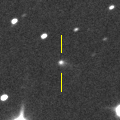
|
Appearing in the morning sky. It will brighten up to 14 mag in early 2023, and it will be observable in good condition.
Date(TT) R.A. (2000) Decl. Delta r Elong. m1 Best Time(A, h)
Aug. 20 7 32.58 17 15.1 4.521 3.734 34 15.8 3:52 (257, 12)
Aug. 27 7 42.12 17 11.5 4.435 3.707 39 15.7 3:59 (261, 17)
|
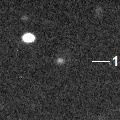
|
Now it is 15.3 mag (Aug. 15, Ken-ichi Kadota). It stays observable in good condition at 15 mag from summer to winter. It locates somwwhat low in the Southern Hemisphere.
Date(TT) R.A. (2000) Decl. Delta r Elong. m1 Best Time(A, h)
Aug. 20 6 2.78 19 48.4 2.736 2.328 56 15.8 3:52 (267, 32)
Aug. 27 6 16.06 19 52.6 2.670 2.330 59 15.7 3:59 (270, 36)
|
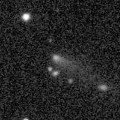
|
Now it is 16.0 mag (Aug. 19, ATLAS-MLO, Mauna Loa). It will brighten up to 15 mag in autumn, and it will be observable in excellent condition.
Date(TT) R.A. (2000) Decl. Delta r Elong. m1 Best Time(A, h)
Aug. 20 2 40.86 9 33.6 2.013 2.487 105 16.0 3:52 (329, 61)
Aug. 27 2 45.25 10 43.8 1.921 2.472 111 15.8 3:59 (344, 65)
|
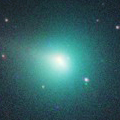
|
It brightened up to 8.8 mag from winter to early spring (Jan. 31, Chris Wyatt). Now it is fading. It has already faded down to 16.8 mag (July 30, J. Nicolas, F. Kugel). It locates extremely low in the Southern Hemisphere. It will be unobservable in August in the Northern Hemisphere.
Date(TT) R.A. (2000) Decl. Delta r Elong. m1 Best Time(A, h)
Aug. 20 11 28.46 26 32.0 3.343 2.472 25 15.9 20:13 (117, 8)
Aug. 27 11 41.42 25 6.9 3.412 2.523 24 16.1 20:02 (116, 6)
|
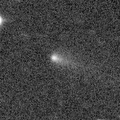
|
Now it is 16.6 mag (Aug. 19, ATLAS-MLO, Mauna Loa). It is expected to brighten up to 15 mag in autumn, and it will be observable in good condition.
Date(TT) R.A. (2000) Decl. Delta r Elong. m1 Best Time(A, h)
Aug. 20 1 29.55 6 28.1 1.454 2.183 123 16.2 3:38 ( 0, 62)
Aug. 27 1 33.52 6 18.3 1.385 2.171 129 16.1 3:14 ( 0, 61)
|

|
It brightened up to 14 mag in 2021. Now it is fading. It has already faded down to 16.4 mag (Aug. 19, ATLAS-HKO, Haleakala). It is observable at 16-17 mag in 2022.
Date(TT) R.A. (2000) Decl. Delta r Elong. m1 Best Time(A, h)
Aug. 20 0 0.15 14 21.1 5.176 5.977 139 16.3 2:09 ( 0, 69)
Aug. 27 23 56.38 14 40.1 5.152 6.014 145 16.4 1:38 ( 0, 70)
|
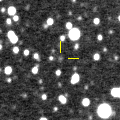
|
Now it is 16.8 mag (June 1, ATLAS South Africa). It will brighten up to 13 mag from 2024 to 2025.
Date(TT) R.A. (2000) Decl. Delta r Elong. m1 Best Time(A, h)
Aug. 20 8 26.03 -25 31.7 8.154 7.459 43 16.4 3:52 (286,-22)
Aug. 27 8 30.90 -25 59.0 8.102 7.423 45 16.4 3:59 (290,-17)
|
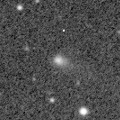
|
Now it is 16.2 mag (Aug. 19, ATLAS-MLO, Mauna Loa). It continued brightening even after the perihelion passage. It stays observable at 16-17 mag in good condition for a while.
Date(TT) R.A. (2000) Decl. Delta r Elong. m1 Best Time(A, h)
Aug. 20 23 21.90 -0 12.8 3.301 4.242 155 16.4 1:31 ( 0, 55)
Aug. 27 23 18.96 -0 31.6 3.277 4.252 162 16.4 1:00 ( 0, 55)
|
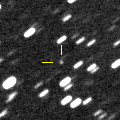
|
Now it is 16.4 mag (Aug. 9, Thomas Lehmann). It will brighten up to 14 mag in 2023. In the Southern Hemisphere, it stays observable in good condition for a long time. It locates somewhat low in the Northern Hemisphere.
Date(TT) R.A. (2000) Decl. Delta r Elong. m1 Best Time(A, h)
Aug. 20 6 42.02 -11 21.6 4.680 4.161 53 16.5 3:52 (288, 6)
Aug. 27 6 42.50 -11 57.4 4.555 4.122 58 16.4 3:59 (294, 12)
|

|
Now it is 15.8 mag (Aug. 19, ATLAS-MLO, Mauna Loa). It brightened up to 14 mag from 2020 to 2021. Now it is fading slowly. It is observable at 16-17 mag in 2022.
Date(TT) R.A. (2000) Decl. Delta r Elong. m1 Best Time(A, h)
Aug. 20 0 49.76 -16 44.4 3.063 3.872 137 16.5 2:58 ( 0, 38)
Aug. 27 0 47.20 -17 21.5 3.027 3.890 143 16.5 2:28 ( 0, 38)
|
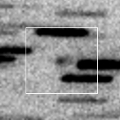
|
Now it is 17.3 mag (Aug. 3, Michael Jager). It stays observable at 16 mag from summer to winter. In the Southern Hemisphere, it locates low until October.
Date(TT) R.A. (2000) Decl. Delta r Elong. m1 Best Time(A, h)
Aug. 20 6 40.22 28 56.1 2.072 1.586 48 16.6 3:52 (253, 28)
Aug. 27 7 3.15 27 58.7 2.032 1.578 49 16.5 3:59 (255, 30)
|
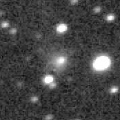
|
Now it is 16.4 mag (Aug. 17, ATLAS-MLO, Mauna Loa). It stayed bright for a while even after the perihelion passage, but it will be fading after this. It will be fainter than 18 mag in winter.
Date(TT) R.A. (2000) Decl. Delta r Elong. m1 Best Time(A, h)
Aug. 20 21 46.69 9 22.0 6.064 7.012 157 16.6 23:51 ( 0, 64)
Aug. 27 21 41.93 8 25.2 6.085 7.037 158 16.7 23:19 ( 0, 63)
|
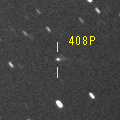
|
Now it is 16.9 mag (Aug. 18, ATLAS-HKO, Haleakala). It will be observable at 16-17 mag in excellent condition from autumn to winter.
Date(TT) R.A. (2000) Decl. Delta r Elong. m1 Best Time(A, h)
Aug. 20 4 15.34 9 2.8 3.445 3.475 83 16.7 3:52 (298, 47)
Aug. 27 4 20.93 8 36.3 3.348 3.473 88 16.6 3:59 (306, 52)
|
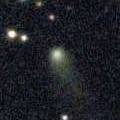
|
Now it is 16.2 mag (Aug. 21, Thomas Lehmann). It stays observable at 16 mag from 2021 to 2022. It locates low in the Southern Hemisphere.
Date(TT) R.A. (2000) Decl. Delta r Elong. m1 Best Time(A, h)
Aug. 20 15 27.42 40 52.2 5.486 5.342 76 16.7 20:13 (113, 58)
Aug. 27 15 30.22 40 24.8 5.563 5.367 73 16.7 20:02 (112, 55)
|
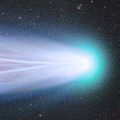
|
It brightened up to 3 mag from mid December to late December. Now it is fading. It is observable in good condition in the Southern Hemisphere. It is getting observable again also in the Northern Hemisphere. No observations have been reported since June.
Date(TT) R.A. (2000) Decl. Delta r Elong. m1 Best Time(A, h)
Aug. 20 15 57.79 -23 29.3 3.359 3.600 95 16.7 20:13 ( 33, 24)
Aug. 27 15 57.99 -22 56.5 3.563 3.681 88 16.9 20:02 ( 36, 22)
|

|
Now it is 17.1 mag (Aug. 15, ATLAS-HKO, Haleakala). It will be observable at 16.5 mag in good condition from summer to autumn.
Date(TT) R.A. (2000) Decl. Delta r Elong. m1 Best Time(A, h)
Aug. 20 3 18.64 25 7.3 2.014 2.298 92 16.7 3:52 (289, 67)
Aug. 27 3 25.82 25 45.6 1.954 2.318 97 16.7 3:59 (298, 73)
|

|
It brightened up to 14.2 mag in 2021 summer (July 18, 2021, Taras Prystavski). Now it is fading. It has already faded down to 16.6 mag (July 26, ATLAS Chile). In the Southern Hemisphere, it stays observable in good condition for a long time. It locates somewhat low in the Northern Hemisphere.
Date(TT) R.A. (2000) Decl. Delta r Elong. m1 Best Time(A, h)
Aug. 20 2 19.44 -25 58.4 4.625 5.163 116 16.8 3:52 (351, 29)
Aug. 27 2 17.35 -26 14.2 4.595 5.205 122 16.8 3:58 ( 0, 29)
|
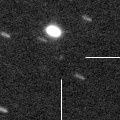
|
Now it is 16.7 mag (Aug. 19, ATLAS-MLO, Mauna Loa). It is expected to brighten up to 8 mag in 2023 July. In 2022, it stays observable in good condition while the comet will be brightening gradually.
Date(TT) R.A. (2000) Decl. Delta r Elong. m1 Best Time(A, h)
Aug. 20 3 32.88 5 47.1 4.216 4.408 94 17.1 3:52 (313, 52)
Aug. 27 3 30.92 5 3.5 4.027 4.342 101 16.9 3:59 (327, 56)
|

|
Now it is 16.7 mag (Aug. 16, ATLAS-HKO, Haleakala). Fading slowly. In the Northern Hemisphere, it stays observable in good condition for a long time. In the Southern Hemisphere, it is not observable after this.
Date(TT) R.A. (2000) Decl. Delta r Elong. m1 Best Time(A, h)
Aug. 20 17 22.21 67 23.2 9.344 9.335 86 17.0 20:13 (172, 57)
Aug. 27 17 17.56 66 57.2 9.364 9.348 85 17.0 20:02 (168, 57)
|
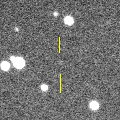
|
Now it is 16.8 mag (Aug. 3, Martin Masek). It is expected to brighten up to 7 mag in early 2024. In the Southern Hemisphere, it stays observable in good condition for a long time. In the Northern Hemisphere, it stays low in 2022.
Date(TT) R.A. (2000) Decl. Delta r Elong. m1 Best Time(A, h)
Aug. 20 6 3.21 -21 56.2 6.607 6.275 66 17.1 3:52 (302, 6)
Aug. 27 6 6.83 -22 41.4 6.479 6.214 70 17.0 3:59 (308, 11)
|
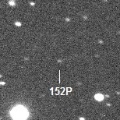
|
Now it is 17.1 mag (Aug. 16, ATLAS South Africa). It will be fading gradually after this. It locates somewhat low in the Northern Hemisphere.
Date(TT) R.A. (2000) Decl. Delta r Elong. m1 Best Time(A, h)
Aug. 20 19 19.33 -28 16.8 2.463 3.306 140 17.2 21:25 ( 0, 27)
Aug. 27 19 18.01 -28 24.3 2.542 3.319 133 17.3 20:56 ( 0, 27)
|
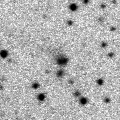
|
Now it is 17.3 mag (Aug. 18, Michael Jager). It started fading before the perihelion passage. It was predicted to stay at 16 mag for a long time. But actually, it will be fainter than 18 mag in autumn. In the Northern Hemisphere, it stays observable in good condition for a long time. In the Southern Hemisphere, it is not observable until 2023.
Date(TT) R.A. (2000) Decl. Delta r Elong. m1 Best Time(A, h)
Aug. 20 17 17.11 70 12.0 3.848 3.889 84 17.2 20:13 (172, 54)
Aug. 27 17 17.23 67 23.4 3.847 3.906 85 17.3 20:02 (168, 56)
|
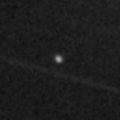
|
Now it is 16.9 mag (Aug. 3, Jean-Francois Soulier). In 2022, it stays observable at 17 mag for a long time.
Date(TT) R.A. (2000) Decl. Delta r Elong. m1 Best Time(A, h)
Aug. 20 4 57.70 28 3.6 0.506 0.969 70 17.2 3:52 (266, 49)
Aug. 27 5 32.24 28 11.3 0.547 0.967 69 17.4 3:59 (266, 49)
|
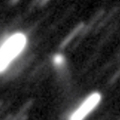
|
Now it is 16.7 mag (Aug. 5, ATLAS-MLO, Mauna Loa). It was observed at 15 mag in 2021. Now it is fading. It stays observable at 16-17 mag for a while in 2022.
Date(TT) R.A. (2000) Decl. Delta r Elong. m1 Best Time(A, h)
Aug. 20 17 45.99 30 21.1 5.217 5.585 106 17.3 20:13 ( 46, 83)
Aug. 27 17 44.73 30 5.4 5.308 5.612 102 17.4 20:02 ( 62, 80)
|

|
It brightened very rapidly up to 15.5 mag from last autumn to last winter (Nov. 2, 2021, Toshihiko Ikemura, Hirohisa Sato). Now it is fading. Appearing in the morning sky.
Date(TT) R.A. (2000) Decl. Delta r Elong. m1 Best Time(A, h)
Aug. 20 6 9.60 16 1.2 4.635 4.133 54 17.5 3:52 (270, 28)
Aug. 27 6 16.13 15 41.4 4.564 4.149 59 17.5 3:59 (274, 34)
|

|
Now it is 17.1 mag (Aug. 11, W. Hasubick). It stays observable at 17-18 mag in 2022. It locates somewhat low in the Southern Hemisphere.
Date(TT) R.A. (2000) Decl. Delta r Elong. m1 Best Time(A, h)
Aug. 20 2 38.53 29 44.0 5.180 5.446 99 17.5 3:52 (290, 77)
Aug. 27 2 32.97 29 42.2 5.065 5.455 107 17.5 3:59 (328, 84)
|
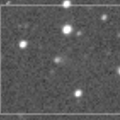
|
It was observed at 17 mag in 2021. It is observable at 17-18 mag also in 2022.
Date(TT) R.A. (2000) Decl. Delta r Elong. m1 Best Time(A, h)
Aug. 20 2 59.30 9 42.9 3.100 3.445 101 17.5 3:52 (321, 59)
Aug. 27 2 59.79 10 27.8 3.021 3.465 107 17.5 3:59 (336, 64)
|
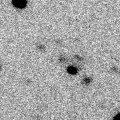
|
Now it is 17.2 mag (Aug. 15, Ken-ichi Kadota). In the Northern Hemisphere, it stays observable at 17 mag in good condition for a long time until winter. In the Southern Hemisphere, it stays extremely low for a long time.
Date(TT) R.A. (2000) Decl. Delta r Elong. m1 Best Time(A, h)
Aug. 20 5 48.75 42 50.0 3.123 2.774 60 17.6 3:52 (241, 43)
Aug. 27 6 4.25 43 29.0 3.060 2.777 64 17.6 3:59 (241, 46)
|
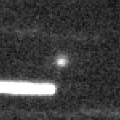
|
Now it is 17.3 mag (Aug. 18, Michael Jager). It will be fading rapidyly, and it will be fainter than 18 mag in late August.
Date(TT) R.A. (2000) Decl. Delta r Elong. m1 Best Time(A, h)
Aug. 20 15 39.24 -10 49.0 1.149 1.511 88 17.6 20:13 ( 45, 32)
Aug. 27 15 22.01 -9 41.8 1.344 1.495 77 17.9 20:02 ( 53, 28)
|
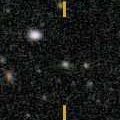
|
Now it is 17.4 mag (July 8, J.-G. Bosch, J. Nicolas, F. Kugel). It is observable at 17 mag from spring to summer. In the Northern Hemisphere, it becomes low in summer.
Date(TT) R.A. (2000) Decl. Delta r Elong. m1 Best Time(A, h)
Aug. 20 13 8.18 -9 24.2 2.465 2.019 52 17.7 20:13 ( 73, 7)
Aug. 27 13 20.57 -11 39.3 2.524 2.021 49 17.7 20:02 ( 72, 5)
|
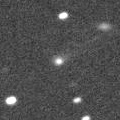
|
Now it is 17.4 mag (Aug. 19, ATLAS-MLO, Mauna Loa). It will be unobservable in September.
Date(TT) R.A. (2000) Decl. Delta r Elong. m1 Best Time(A, h)
Aug. 20 13 36.23 -10 40.2 5.164 4.732 59 17.8 20:13 ( 68, 11)
Aug. 27 13 41.47 -11 12.7 5.254 4.734 54 17.8 20:02 ( 69, 9)
|
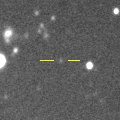
|
Now it is 18.1 mag (Aug. 19, ATLAS-MLO, Mauna Loa). It stays 18 mag for a long time even after the perihelion passage.
Date(TT) R.A. (2000) Decl. Delta r Elong. m1 Best Time(A, h)
Aug. 20 2 34.99 -5 51.7 4.680 5.129 110 17.8 3:52 (341, 47)
Aug. 27 2 35.11 -6 12.2 4.614 5.155 117 17.8 3:59 (354, 49)
|
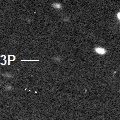
|
It brightened up to 18 mag in last winter. Appearing in the morning sky. It stays observable at 18 mag for a while.
Date(TT) R.A. (2000) Decl. Delta r Elong. m1 Best Time(A, h)
Aug. 20 7 19.04 24 33.0 2.921 2.225 38 17.8 3:52 (253, 19)
Aug. 27 7 33.98 23 56.8 2.884 2.239 42 17.9 3:59 (256, 22)
|

|
It brightened up to 17 mag in early 2022. Now it is fading. It will be fainter than 18 mag in autumn. It is not observable in the Northern Hemisphere.
Date(TT) R.A. (2000) Decl. Delta r Elong. m1 Best Time(A, h)
Aug. 20 7 30.83 -48 22.0 6.001 5.715 68 17.8 3:52 (314,-23)
Aug. 27 7 33.87 -49 39.5 5.997 5.734 70 17.9 3:59 (318,-19)
|
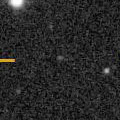
|
Now it is 18.2 mag (Aug. 19, ATLAS-MLO, Mauna Loa). It stays observable at 18 mag in good condition from August to September.
Date(TT) R.A. (2000) Decl. Delta r Elong. m1 Best Time(A, h)
Aug. 20 23 56.40 -8 41.8 1.390 2.322 150 17.9 2:05 ( 0, 46)
Aug. 27 23 54.26 -8 47.8 1.359 2.323 157 17.8 1:35 ( 0, 46)
|
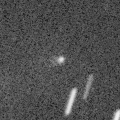
|
Now it is 17.8 mag (July 26, J. Nicolas, F. Kugel). It is observable in excellent condition. But it will be fading rapidly, and it will be fainter than 18 mag in August.
Date(TT) R.A. (2000) Decl. Delta r Elong. m1 Best Time(A, h)
Aug. 20 16 5.05 -31 15.2 1.014 1.535 98 17.9 20:13 ( 27, 18)
Aug. 27 16 24.06 -33 48.1 1.080 1.557 96 18.1 20:02 ( 25, 16)
|
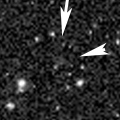
|
Now it is 17.3 mag (June 27, ATLAS South Africa). Very far object. It stays 18 mag for a long time from 2021 to 2026. In the Southern Hemisphere, it stays observable in good condition for a long time. In the Northern Hemisphere, it is not observable at all.
Date(TT) R.A. (2000) Decl. Delta r Elong. m1 Best Time(A, h)
Aug. 20 8 7.80 -63 45.4 10.736 10.592 79 17.9 3:52 (328,-33)
Aug. 27 8 10.87 -64 16.4 10.739 10.584 78 17.9 3:59 (330,-30)
|

|
It approached to Sun down to 0.14 a.u. on May 15. But it was not observable around that time. In the Northern Hemisphere, it stays observable at 17-18 mag in good condition from July to November. In the Southern Hemisphere, it stays extremely low.
Date(TT) R.A. (2000) Decl. Delta r Elong. m1 Best Time(A, h)
Aug. 20 4 12.17 41 6.5 1.604 1.720 78 18.0 3:52 (247, 60)
Aug. 27 4 12.54 42 8.2 1.564 1.782 84 18.0 3:59 (244, 67)
|
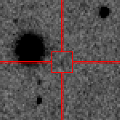
|
Now it is 20.0 mg (Aug. 4, J. Maikner). At the discovery, it was expected to be observable at 16-17 mag for a long time from 2020 to 2022. It had been lost for a long time since 2015, but the recent observations are found. Actually, it brigthens up to 20-21 mag at best.
Date(TT) R.A. (2000) Decl. Delta r Elong. m1 Best Time(A, h)
Aug. 20 0 53.18 11 10.5 5.543 6.241 129 21.2 3:02 ( 0, 66)
Aug. 27 0 51.94 11 10.8 5.481 6.257 136 21.2 2:33 ( 0, 66)
|
|
![]()
 C/2020 V2 ( ZTF )
C/2020 V2 ( ZTF ) C/2020 R7 ( ATLAS )
C/2020 R7 ( ATLAS ) 22P/Kopff
22P/Kopff 81P/Wild 2
81P/Wild 2 C/2020 K1 ( PanSTARRS )
C/2020 K1 ( PanSTARRS ) 117P/Helin-Roman-Alu 1
117P/Helin-Roman-Alu 1 C/2019 U5 ( PanSTARRS )
C/2019 U5 ( PanSTARRS ) 29P/Schwassmann-Wachmann 1
29P/Schwassmann-Wachmann 1 C/2022 P1 ( NEOWISE )
C/2022 P1 ( NEOWISE ) 9P/Tempel 1
9P/Tempel 1 116P/Wild 4
116P/Wild 4 C/2021 F1 ( Lemmon-PanSTARRS )
C/2021 F1 ( Lemmon-PanSTARRS ) 118P/Shoemaker-Levy 4
118P/Shoemaker-Levy 4 45P/Honda-Mrkos-Pajdusakova
45P/Honda-Mrkos-Pajdusakova C/2020 Y2 ( ATLAS )
C/2020 Y2 ( ATLAS ) C/2021 Y1 ( ATLAS )
C/2021 Y1 ( ATLAS ) 285P/LINEAR
285P/LINEAR 255P/Levy
255P/Levy C/2018 U1 ( Lemmon )
C/2018 U1 ( Lemmon ) C/2021 T2 ( Fuls )
C/2021 T2 ( Fuls ) C/2022 L1 ( Catalina )
C/2022 L1 ( Catalina ) 327P/Van Ness
327P/Van Ness C/2020 S4 ( PanSTARRS )
C/2020 S4 ( PanSTARRS ) 119P/Parker-Hartley
119P/Parker-Hartley P/2022 L3 ( ATLAS )
P/2022 L3 ( ATLAS ) 19P/Borrelly
19P/Borrelly 61P/Shajn-Schaldach
61P/Shajn-Schaldach C/2020 F5 ( MASTER )
C/2020 F5 ( MASTER ) C/2021 G2 ( ATLAS )
C/2021 G2 ( ATLAS ) 395P/2020 H1 ( Catalina-NEAT )
395P/2020 H1 ( Catalina-NEAT ) C/2021 X1 ( Maury-Attard )
C/2021 X1 ( Maury-Attard ) 246P/NEAT
246P/NEAT 157P/Tritton
157P/Tritton C/2019 T3 ( ATLAS )
C/2019 T3 ( ATLAS ) 408P/2020 M7 ( Novichonok-Gerke )
408P/2020 M7 ( Novichonok-Gerke ) C/2020 H6 ( ATLAS )
C/2020 H6 ( ATLAS ) C/2021 A1 ( Leonard )
C/2021 A1 ( Leonard ) 44P/Reinmuth 2
44P/Reinmuth 2 C/2019 F1 ( ATLAS-Africano )
C/2019 F1 ( ATLAS-Africano ) C/2021 T4 ( Lemmon )
C/2021 T4 ( Lemmon ) C/2019 O3 ( Palomar )
C/2019 O3 ( Palomar ) C/2021 S3 ( PanSTARRS )
C/2021 S3 ( PanSTARRS ) 152P/Helin-Lawrence
152P/Helin-Lawrence C/2020 U5 ( PanSTARRS )
C/2020 U5 ( PanSTARRS ) 107P/(4015) Wilson-Harrington
107P/(4015) Wilson-Harrington C/2020 O2 ( Amaral )
C/2020 O2 ( Amaral ) P/2021 N2 ( Fuls )
P/2021 N2 ( Fuls ) C/2020 U4 ( PanSTARRS )
C/2020 U4 ( PanSTARRS ) 422P/2021 L1 ( Christensen )
422P/2021 L1 ( Christensen ) C/2021 QM45 ( PanSTARRS )
C/2021 QM45 ( PanSTARRS ) C/2022 N1 ( Attard-Maury )
C/2022 N1 ( Attard-Maury ) 100P/Hartley 1
100P/Hartley 1 99P/Kowal 1
99P/Kowal 1 378P/2019 E2 ( McNaught )
378P/2019 E2 ( McNaught ) 113P/Spitaler
113P/Spitaler C/2020 F7 ( Lemmon )
C/2020 F7 ( Lemmon ) 442P/2022 G1 ( McNaught )
442P/2022 G1 ( McNaught ) 444P/2022 C4 ( WISE-PanSTARRS )
444P/2022 C4 ( WISE-PanSTARRS ) C/2019 E3 ( ATLAS )
C/2019 E3 ( ATLAS ) (3200) Phaethon
(3200) Phaethon C/2014 F3 ( Sheppard-Trujillo )
C/2014 F3 ( Sheppard-Trujillo )![]()































































